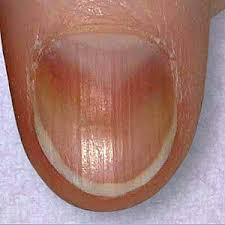

Has anyone ever off-handedly recommended that you take zinc? Most frequently zinc is remembered as an ingredient mixed into glossy, fruit-flavored lozenges to help prevent a pending attack of the common cold, or as packed into synthetic multi-vitamin concoctions for “muscle-bulking.” It is a supplement that seems to be tossed about frequently in conversation with a reputation for general “helpfulness,” but with little clarity regarding its actual importance. However, mysterious zinc is in fact a very powerful mineral that has wide-ranging functions in the fundamental biochemistry of the body. It is integral for proper cellular metabolism and contributes to the make-up of more than 300 enzymes in the human body. Zinc is also involved in complex life-sustaining reactions such as the immune response, protein synthesis and cell division. It is therefore crucial for growth and development, wound healing, energy level maintenance and mood regulation, among other things. Thus despite the common dogma that zinc should only be consumed when about to get sick or after a good work-out, this mineral is actually needed in our everyday activities and is certainly not one to be ignored.
Food Sources of Zinc
Zinc is an essential nutrient, meaning that it is not organically manufactured within the body and therefore needs to be consumed in the form of food or supplemental sources. The recommended daily intake of zinc is between 10-20 mg per day, though this is variable depending on age and health condition. This may seem like a modest amount, however given the mineral-deficient state of modern food sources and rampant problems with gastrointestinal function in the United States, you may be surprised at just how difficult accumulating this small quantity can be. Zinc is most commonly found in seafood, but is also present in eggs, certain meats, and nuts. Some breakfast cereals and processed grains will also claim to be fortified with 25% of the daily value of zinc in a serving. This is a somewhat comical assertion however, as commercial cereals are rich in phytates (the very irritating substance found in unsoaked/sprouted grains and nuts), which significantly reduce the absorption of zinc, and can even contribute to zinc deficiency. Therefore, those individuals who are vegetarians or who consume a low animal product, highly-refined carbohydrate diet are at a particular risk for zinc deficiency regardless of food fortification. The bioavailability of zinc from plant sources can be increased by personally preparing foods using the techniques of soaking, sprouting and fermenting grains and seeds, however supplementation may still be required for adequate maintenance levels. Nourishing Traditions is a valuable resource for learning more about these food preparation techniques.
Zinc supplies are tightly controlled and distributed throughout the body for protein and nucleic acid compositions. There is no specific system for zinc storage in the human body, and it is thus regulated tightly by homeostatic mechanisms which keep about 98% of the body’s supply within the cells at any given time. This system makes zinc levles very difficult to measure using overt laboratory methods. Plasma and serum tests for zinc levels are the most common means of evaluation, however they pose significant difficulties because they are not indicative of cellular zinc. There is however, a simple DIY taste test first reported in the medical journal, The Lancet, that can help determine physiological zinc levels. This test uses Premier Research Labs Liquid Zinc Assay, an easily absorbed form of supplemental zinc sulfate heptahydrate, to yield rapid and accurate results. Quite simply, you taste a teaspoon full of the Zinc Assay and will find that you experience varying tastes based on your body’s current needs. If your are deficient in zinc, the liquid will taste like water, while if you have adequate levels it will taste bitter.
Sources of Zinc
Oysters, cooked, breaded and fried, 3 ounces74.0493Beef chuck roast, braised, 3 ounces7.047Crab, Alaska king, cooked, 3 ounces6.543Beef patty, broiled, 3 ounces5.335Breakfast cereal, fortified with 25% of the DV for zinc, ¾ cup serving3.825Lobster, cooked, 3 ounces3.423Pork chop, loin, cooked, 3 ounces2.919Baked beans, canned, plain or vegetarian, ½ cup2.919Chicken, dark meat, cooked, 3 ounces2.416Yogurt, fruit, low fat, 8 ounces1.711Cashews, dry roasted, 1 ounce1.611Chickpeas, cooked, ½ cup1.39Cheese, Swiss, 1 ounce1.28Oatmeal, instant, plain, prepared with water, 1 packet1.17Milk, low-fat or non fat, 1 cup1.07Almonds, dry roasted, 1 ounce0.96Kidney beans, cooked, ½ cup0.96Chicken breast, roasted, skin removed, ½ breast0.96Cheese, cheddar or mozzarella, 1 ounce0.96Peas, green, frozen, cooked, ½ cup0.53Flounder or sole, cooked, 3 ounces0.32
What is the Main Cause of a Heart Attack? What is its Solution? A heart attack is the blockage of… Read More
In the vast economic arena, one term that often takes center stage, inciting extensive debates and discussions, is the "debt… Read More
De-Dollarization: The Changing Face of Global Finance The financial landscape is in a state of flux, with an intriguing economic… Read More
The curtains closed on a dramatic Bundesliga season with Bayern Munich standing tall once again, clinching their 11th straight title.… Read More
The Unfolding Story of Celine Dion's Health In recent news that has left fans across the globe stunned, iconic singer… Read More
As the echoes of the recent NBA season start to fade, the attention of enthusiasts is firmly glued to one… Read More